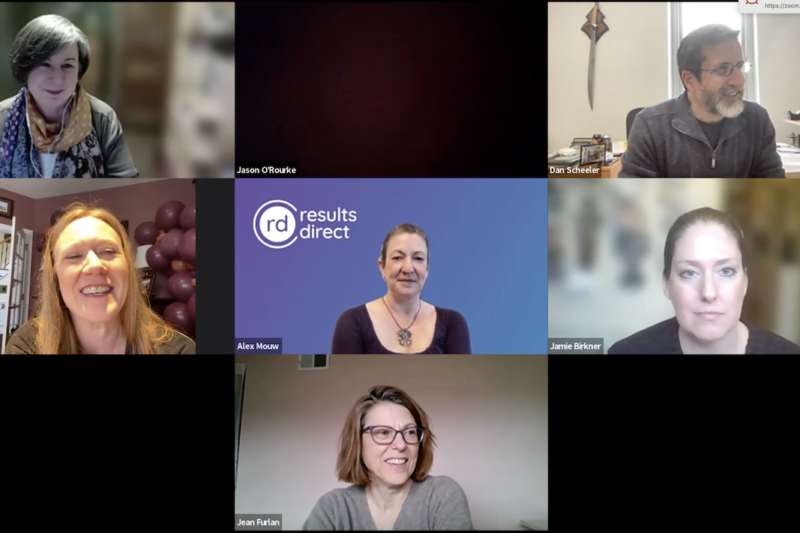TL; DR (also known as takeaways): Your culture may be standing in the way of…

Photo by averie woodard on Unsplash
(as published in Associations Now Plus, May 2018)
By creating an organization-wide content strategy, your association can seize more opportunities to ensure that current and prospective members know about and use the valuable programs you offer them.
Content is a core way that associations provide value to their members, but the large volume of content—research reports, conference sessions, and more, in a growing number of channels—has made it increasingly challenging for associations to ensure that what they are producing resonates with members.
Content strategy solves this problem. It ensures that all content—not just in publications, but in training and professional development products, resources, and tools—is created, managed, governed, and marketed in a holistic and effective manner.
Without strategic management, content gets handled in a scattershot way by various departments. Efforts are duplicated, and content is produced that doesn’t meet members’ expectations. But it could with a master plan and interdepartmental coordination.
Crafting an organization-wide content strategy is well worth the investment of time and resources, so much so that ASAE (the Center for Association Leadership) has commissioned a study of how content strategy should be used within the association space. If your organization is seeking a way to maximize the value of content, follow these 10 steps to create a strong strategy.
Step 1: Gather data about your association and members. First, identify content opportunities by revisiting information gleaned from member needs assessments, conference exit surveys, membership surveys, and digital reports that ask what your members want. Next, conduct a member survey that specifically focuses on members’ awareness of, interest in, and opinions about your communication channels (i.e., publications, e-newsletters, and social media) and your content topics. Be sure to gather information about the internal goals and challenges of every staff department that creates content.
Step 2: Create empathy-based audience personas and a customer journey framework. Association staff know a great deal about your members, but they may not always tap into members’ knowledge. This is a great opportunity to build empathy-based personas for key audiences. When this happens, everyone in the organization has a deeper understanding of how to create content, so that it resonates with the intended audience. For example, it’s asking: Would video work well? Or does the audience prefer a quick text message with the latest data?
Step 3: Audit and assess your content. Analyze your website and digital communication metrics to get data on unique page views over the past year, audience, public or password-protected access, departments that created the content, and more. Automated inventory tools can do this for you. Armed with this data, you’ll know what content to keep, what needs to be revised, and what to delete. It’s also a good idea to capture notes about each site page’s goals and conditions. I typically find that about 25 percent of content is good as is, about 30 percent should be deleted, and 45 percent needs to be revised.
In a typical content audit, we find that about 25 percent of content is good as is, about 30 percent should be deleted, and 45 percent needs to be revised.
Evaluating content will result in criteria for what should be deleted. These criteria become the guidelines for ongoing content creation. Consult with each department or program about the content decisions, so they have a chance to weigh in too.
Step 4: Conduct a comparative content analysis. What are other organizations doing with their content? Look at competitors, similar organizations in the same industry, or comparable organizations in other industries. Many associations find that their members go to for-profit entities for some information or resources, and it’s important to know where your association excels and where competitors have the edge.
Step 5: Develop guidelines for content creation and publishing. Content guidelines are a mission statement for your content strategy (created by a cross-section of staff stakeholders), digital content best practices, and a style guide listing your association’s preferred terminology and references. Message architecture is also included: If your branding guidelines don’t include content, you’ll want to identify the attributes that describe what your organization is and what it is not. The result is a list of prioritized attributes that describe your organization’s voice and tone.
Step 6: Create content governance guidelines. Good content takes editing, review, and fact-checking. Particularly with digital content, it’s crucial to avoid content ROT (redundant, outdated, and trivial) and to give your content a lifecycle. Big-picture questions to ask: Who should publish your website content? What does success mean for your content?
Step 7: Ensure your association has a single controlled vocabulary and taxonomy. Topical tags are the glue enabling all content on the same topic to be related to each other, regardless of which internal group created it.
Step 8: Plan for content transformation and migration. Associations often undertake content strategy efforts either as a precursor to or during a website redesign—in either instance, it’s important to assign and create the timeline for content revisions since they will affect the timeline for the overall content migration to a new website. If there is no redesign in sight, this is the moment to create a smart, sustainable structure or model for content, so that it can be repurposed and reused throughout the site and in your content promotions.
Step 9: Schedule content promotion. The ideal scenario is to have a single content calendar that all content creators can populate. This calendar should record information about the program, topic, audience, and business goal for the content. There are many calendar tools out there; this blog post has some helpful suggestions.
Step 10: Plan for sustainability. Making your new content strategy and policies stick will be an ongoing effort. Change takes time, training, and reminders, so create a plan for ongoing education and follow-up. Here is a blog post outlining how to bring your content strategy to life, and steps to a complete content strategy roadmap [PDF].
Creating a content strategy may seem daunting, but for many associations, the only thing that’s daunting is the thought of operating without one. Planning your approach to content is an investment worth making, both for your organization and members.
If you are interested in creating your own content strategy roadmap, please get in touch!


This Post Has 0 Comments